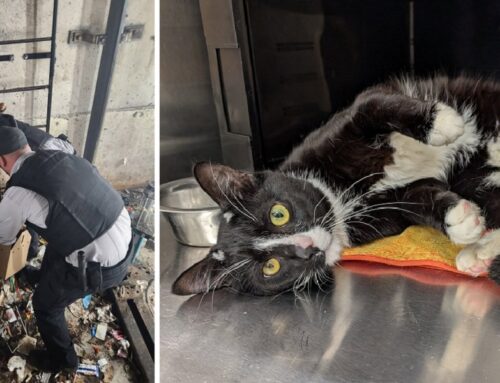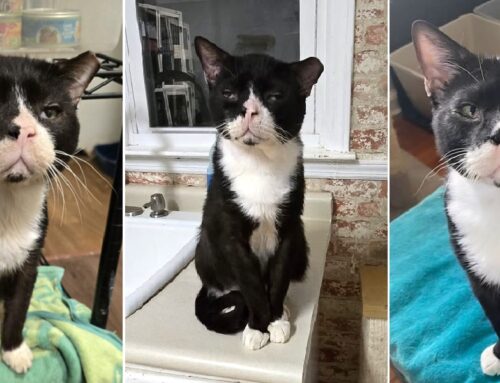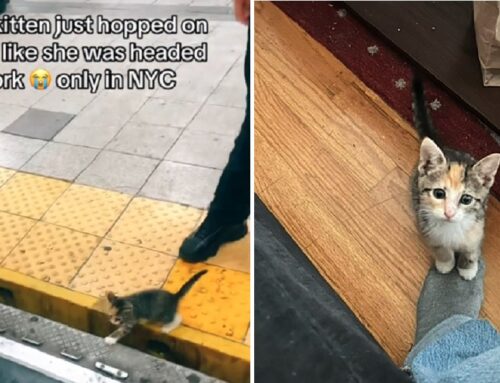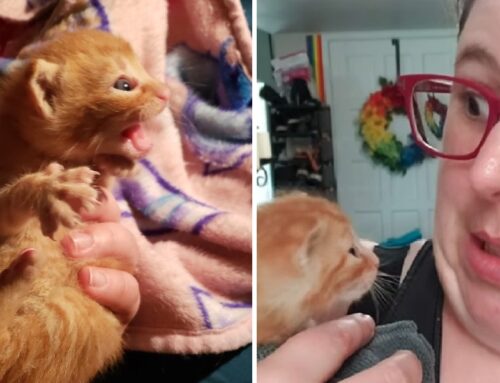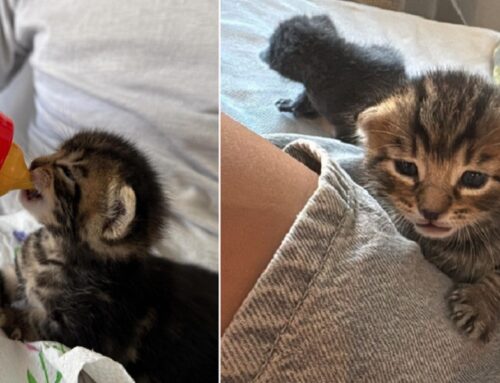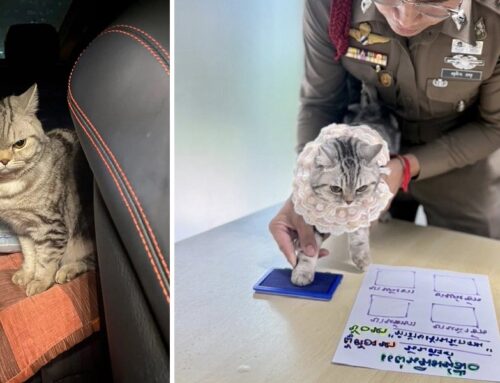The first detailed analysis of a housecat’s nasal airways has revealed something we cat lovers won’t find surprising: cats have incredible noses comparable to dogs and 100 times more efficient than amphibians. That’s not to say cats will replace dogs for sniffing out crime, but that’s not because they couldn’t do it; they just aren’t as likely to cooperate if they don’t want to.
“The cat nose probably has a similar complexity level as the dog’s, and it’s more complex than a rodent’s – and it begs the question – why was the nose evolved to be so complex?” says Kai Zhao, senior author of a new study.

Image via YouTube/Ohio State News of cat smelling a rose and the computer model showing particles going through the nasal airaways and turbinates
Cats’ Sense of Smell Efficient Laboratory Equipment
Scientists have long known cats have almost superpowered night vision and hearing and abilities rivaling echolocation. Now, they know that a cat’s nose knows in ways similar to a gas chromatograph, a laboratory technique that detects tiny molecules in gases. Thus, a cat’s sense of smell may be superior to highly efficient chemical analysis equipment. So much so that the scientists think the findings could improve gas chromatograph technology.
“In essence, the researchers suggest, the cat nose functions as a highly efficient and dual-purposed gas chromatograph – a tool that, in the laboratory, detects and separates chemicals in vaporized form. In fact, the cat nose is so efficient at this that its structure could inspire improvements to the gas chromatographs in use today,” Science Daily reported.
Bony Structures Called Turbinates
Using high-resolution 3D computer models of a cat’s nose, the researchers ran simulations that show how a cat’s nasal passages evolved in complex ways. The model is based on micro-CT scans of a cat’s head, a housecat that had passed away and was then donated for research.
Notably, this was the “most complicated” such model to date, even more than previous models of rat and human noses.
Tiny bony structures called turbinates inside the nose help direct and control airflow through highly complex coiled structures. Scientific American describes turbinates as “tightly coiled, sensor-studded channels.” Dogs, rats and bobcats also have this coiled turbinate structure.
Other animals may have straight channels, but the coils help more receptors fit into a cat’s relatively short, compact face.
Two Pathways to Breathe or Smell
Air is diverted in two regions as cats breathe or smell an odor. One path above the roof of the mouth filters air to the lungs via turbinates in a way compared to a car’s radiator grid. Air is cleansed and humidified before reaching the lungs.
At the same time, a pathway sends odors for fast smell processing direct to the brain’s olfactory region. Processing the scents quickly allows a cat to react fast to potential dangers, locate prey, find kin, and adapt to diverse environments.
Next, the air is recirculated in parallel channels, allowing the cat to process the odor much longer.
“That was actually a surprise,” Zhao said. “It’s like you take a sniff, the air is shooting back there and then is being processed for a much longer time.”

Image of various turbinates in the colored areas via Sage Journals.
Why Cats Make the ‘Stinky Face’
A smell neuroscientist not involved with the study suggested cats may make that “stinky face” to try to close nasal passageways off from unpleasant odors.
“Cats’ nasal sensitivity might also explain why they make the characteristic “stinky face” when they smell something unpleasant. Like humans smelling milk that has gone off, they may be trying to close up their nasal passages to avoid inhaling the scent too deeply,” Luis Saraiva told Scientific American.
Here’s Marmalade making another funny stinky face after first meeting Calypso. Did Marm have a problem with his new sibling’s scent? Or was Calypso just too darn cute and getting too much attention? Or, was it merely Marm being Marm?

Image via Facebook/Cole and Marmalade
Conversely, if a cat loves a smell, that might explain why they can’t get enough, as with catnip.

Rescue, Miss Moneypenny smelling the catnip via Facebook/Cole and Marmalade
Maybe those turbinate structures keep the catnip high slowly circulating deep in their nose for hours? No wonder they act so wacky!
Video by Ohio State News:
Featured image: Marmalade’s stinky face via Facebook/Cole & Marmalade









